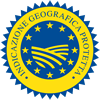Description
The Haricot Tarbais PGI is a bean that may be sold fresh in pods, dried and shelled or frozen.
Production Area
The production area of the Haricot Tarbais PGI includes some cantons of the Hautes-Pyrénées, Gers, Haute-Garonne and Pyrénées-Atlantiques departments, in the Midi-Pyrenees and Aquitaine regions.
Production Method
Sowing is carried out in healthy, permeable soil, with good water retention. Cultivation is carried out by means of the tailormade cultivation method of plants, in the natural way, using corn barrels, or artificially, using supporting nets. Beans are harvested by hand, over a number of stages. Beans are dried in the pods before threshing, if necessary the process is completed by drying the seeds.
Appearance and Flavour
Fresh Haricot Tarbais PGI is presented in pods containing three to six seeds and 15 to 20 cm in length, of a greenishyellow colour which may become tinged with purple when ripe. The dried bean is presented in pure and matt white seeds. These are 2 cm in size with between 12% and 17% moisture content. It has an extremely thin skin that facilitates cooking that makes it delicate, light and digestible. It does not turn to powder when cooked, but its taste is soft and velvety.
History
It seems that the Haricot Tarbais PGI has Mexican origins where it was grown together with corn and it was taken to Europe after the Columbus expedition. The story says that Catherine de' Medici, the future wife of Henry II in 1553, had a bean bag in her bride's basket. This type of cultivation expanded quickly because dried beans were easily stored and transported. The full development of bean production in this region was in the 20th century, after a decline phase around 1950 and an intensive recovery after 1980.
Gastronomy
The Haricot Tarbais PGI, if fresh, is preserved for a few days in the compartment with greater temperature of refrigerators; if dry, it is preserved for a long time in dry and ventilated places; it should be frozen according to the usual frozen products storage standards. To prepare dry beans, it is recommended to dip them in cold water the night before cooking them in salty water, and to boil them for approximately one hour. The cooking time of the fresh product is halved and obviously, it is not necessary to previously dip it in water. The Haricot Tarbais PGI is used together with other vegetables for soups or creams, as side-dish of roast meat, with smoked sausages, cooked in goose grease, with tomatoes and with bacon. The most particular recipe is the Haricots Tarbais confits au miel, cooked in the juice obtained from the preparation of bird meat together with honey and blanched vegetables.
Marketing
The product is sold as Haricot Tarbais PGI, in the fresh, dry or prepared and frozen varieties. It is marketed in packages of 250 gr, the ideal quantity for two-three servings, of 500 gr, of 1 kg and of 5 kg, always labelled with PGI logo.
Distinctive Features
Harmonious balanced climate with mild temperatures in a limited range, a sufficient but not excessive amount of rainfall spread over the year, is ideal for Haricot Tarbais PGI cultivation, which is clearly distinguished from other beans in terms of organoleptic and culinary properties.






